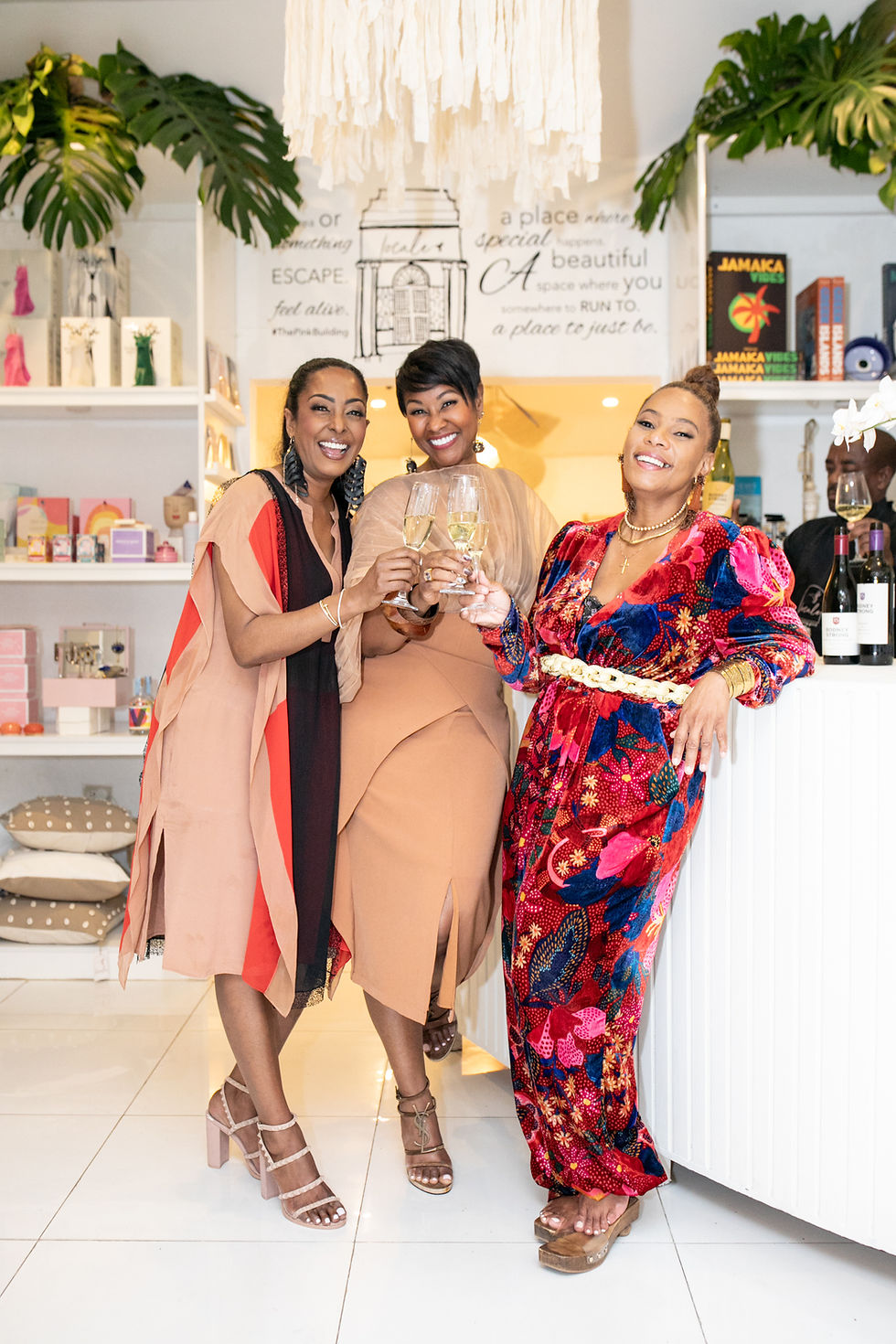Crafted Kinship : Lavar Munroe | Malene Barnett
- Locale Jamaica
- Jan 3
- 3 min read

AN INTERDISCIPLINARY VISUAL ARTIST WHO
REFLECTS ON MIGRATION, MOVEMENT, CHANGE, AND ADAPTATION
A conversation between Author Malene and Artist Lavar:
I strategically gather materials from various places, including materials from my home—The Bahamas—along with those I’ve collected from my travels. I find making paintings somewhat similar to making music. There are many tones, melodies, and rhythms that make a painting work. These can range from expressionistic to organic to controlled gestures.
What region or culture most influences you? Can you talk about your experience of finding kinship with the land, people, or cultures in Africa?
In 2022, I made my initial journey to Zimbabwe with the objective of undertaking a series of new works inspired by that country. Shortly after my visit, I was awarded a Guggenheim Fellowship, which funded my second trip there. My goal was to focus on the death and spiritual practices of the Shona people and how they were similar to and different from such practices in The Bahamas.
During my most recent visit, I was invited to an all-night ritual ceremony in a remote village, where members of an extended family sought to communicate with the spirit of a woman who had died a year prior to the event. Through traditional music, dance, singing, and the consumption of snuff (tobacco) and a locally brewed beer known as Seven Days—and the help of a mediator assigned by that community—they successfully reconnected with the spirit of the deceased woman.
The ceremony is known as kurova guva (which when translated to English means “hitting the grave”) and is an age-old practice of the Shona people.
Much of my practice borrows from the field of anthropology, where my thesis takes the form of paintings rather than text. My intentions are to continue visiting Zimbabwe to further build on my research. I will continue to examine and explore various facets of the culture with the goal of developing a robust anthropologic diary of large-scale paintings that compare spiritual practices in Zimbabwe and The Bahamas.
What materials are you most connected to? Has your approach to or use of materials changed over time in your practice?
I’m most connected to materials that I inherit. When my grand- mother died, I inherited all her stuff: jewelry, letters, furniture. From my father, I have materials from his work as a parasailing instructor. I have a series of parachute works, which includes some of the harnesses I cut out in collage and embedded in some of the paintings. Through my putting their things in my work, they will live forever.

Do you see the act of making as a spiritual or sacred practice?
The studio is a very sacred space. The practice is extremely spiritual. My focus is heightened, somewhat like when one is in a church, synagogue, or mosque. I enter the space with the intention of engaging in critical dialogues. It is my belief that when I am making art, I’m being guided by a higher entity or being. There is an unexplainable connection that happens, which allows me to connect and communicate through the paintings and objects being made in the studio.
Excerpted from Crafted Kinship by Malene Barnett (Artisan Books).
.png)




Comments